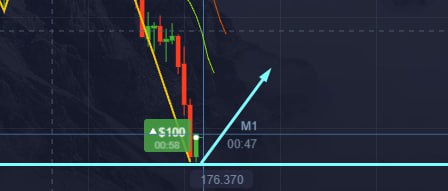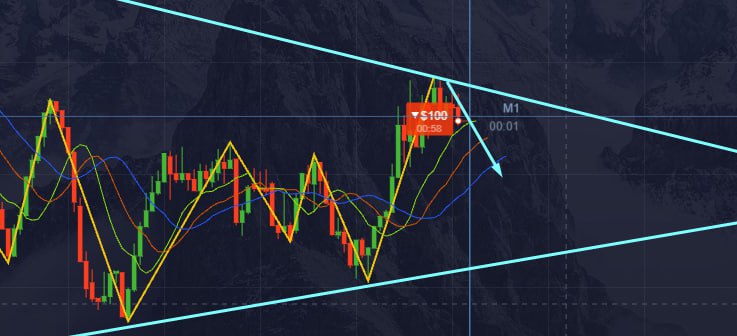Coltesse Shirts Ss13 Collection 3.jpg
When it comes to trading, the most notable thing that sets different trading methods apart is how long a trader holds his investment before trading it back for money . In other words, trading methods are set apart by the time duration between buying and selling an asset Pocket Option Qanday . In short-term trading, this duration can vary from less than a minute and up to a few weeks.
How does Pocket make money? Displaying sponsored content is one way that Pocket can earn revenue and sustain itself while offering Pocket for free. By upgrading to Pocket Premium, you are helping Pocket's efforts more directly, and therefore you won't see any sponsored posts in Pocket or Pocket Hits newsletters.
What documents are needed for Pocket Option address verification? Acceptable documents include bank statements, address certificates, or utility bills not older than three months. Ensure the uploaded documents are clear, colored, and unedited. Bank card verification. If you intend to withdraw funds using a card, Pocket Option will request card verification.
Trading methods that are short-term focused require the trader to devote more time and attention to them than those that cover longer durations, because the number of trades is significantly higher in short-term trading.
In this article, we will cover short and medium-term trading methods, while the article on long-term trading methods focuses on methods with longer time spans.
Short-term trading methods essentials
- Trading methods are set apart by the time duration between buying and selling an asset.
- Short-term trading methods focus on relatively short time spans.
- Some trading methods rely more heavily on technical analysis, while others on fundamental analysis.
- It is advisable to only use the trading methods that suit your knowledge and time available for trading.
Short and medium time span trading methods:
- Scalp trading
- Day trading
- Swing trading
Introduction Coltesse Shirts Ss13 Collection 3.jpg

Scalp trading, also called scalping, is a trading method which focuses on profiting from very small price changes. Time duration between buying and selling in scalping ranges from 1 minute up to 15 minutes, sometimes more.
Scalping strategies and rules
The goal of scalping is to make as many small profits as possible, locking in profits early. In crypto trading, scalping yields are usually between 1% and 3%. Scalp traders (also called scalpers) usually make a number of trades each day, sometimes dozens or even hundreds of them.
In scalp trading, the number of winning trades must exceed the number of losing trades to be profitable. To ensure that the losses are not bigger than the gains, a trader can use stop-loss orders placed at a maximum of 3% below the entry point.
Scalping is often done when the market is ranging between horizontal support and resistance levels, or right after a big pump or sell off, when the price is very volatile. It is also possible to scalp trade while holding longer-term positions. For instance, one can have a swing trade (more on swing trading below) open and scalp shorter time frames in between.
Pros:
- Potential for quick profits
- No fundamental analysis required
- Not much exposure to the market
- Small moves are frequent and easy to come by
Cons:
- Time-consuming
- Requires very precise entry points (the price at which an asset is bought), as the price moving only a few percent in the wrong direction would result in hitting a stop loss
Day trading

Day trading is a trading method which utilizes bigger price movements than scalping, but still relatively small – at least for highly-volatile crypto markets. When day trading, the time duration between buying and selling an asset lasts from 15 minutes up to a maximum of 1 day.
Day trading strategies and rules
Traders utilizing the day trading method usually execute a few trades per day. They try to capture price movements from 5% to 15%. The rule of day trading is to close all positions within a day, thus avoiding the risk of exposure when not monitoring the market. This is particularly important for cryptocurrency markets, which are open 24/7, unlike traditional markets, which usually close during the night.
Day trading often involves “trading the news.” For instance, good news, such as a market reaching a new level of regulation or a breakthrough in the development of a blockchain, could vastly increase a coin’s price, while bad news could make the price plummet.
Day trading relies on high market volatility, which makes the crypto market one of the best for this trading method. If the entry point is selected exceptionally well and the market behavior indicates the continuation of an uptrend, then the position can be kept open even during the night, thus evolving it into a long-term trade.
Pros:
- Quick results – trades close within a day
- Relatively safe – short exposure to the market
Cons:
- Demands advanced technical analysis skills and the knowledge of fundamental analysis
- Time-consuming and stressful
Swing trading
Swing trading tries to capture big price movements in a medium time-frame interval. In swing trading, the position is held from a few days to weeks, sometimes even a couple of months.
Swing trading strategies and rules
Traders utilizing this method place just a few trades per month. The goal is to buy an asset before it experiences a big price move. Thus the sought-after price movements range from 15% all the way to 100% (sometimes even more) which is not uncommon in the highly-volatile crypto markets.
As this method is trying to capture big market moves, the number of winning trades does not need to exceed the number of losing trades to be profitable. For instance, if three consecutive losing trades result in a 7% loss each, followed by a winning trade with 50% profit, overall performance is positive.
Swing traders often open a position in anticipation of upcoming news or events related to the asset, which could significantly increase its price in a relatively short period of time (the introduction of a government grant policy for crypto start-ups, for instance). When swing trading yields profit, the gains are usually reinvested (from bitcoin to a different cryptocurrency or vice versa), trying to capture another big price movement on an asset the price of which has not yet swung.
One can always decide to keep the swing trade open even after the price upsurge and thus evolve it into a long-term investment.
Pros:
- Very profitable if executed correctly and under the right circumstances
- Requires much less time than scalping and day trading
Cons:
- Requires expert technical analysis skills combined with fundamental analysis
- Fraught with risk, as the price can make big moves in any direction
- The trader is exposed to overnight market movements
All the trading methods covered here are viable in the crypto market and can result in steady profits when mastered and utilized correctly. However, risk is always involved and should be mitigated with a correct stop order placement. The trading style can also be a combination of several methods, some focused on the short-term, while others on medium to long-term.
When deciding which trading method to use, traders must know how much time they are willing to spend on trading and estimate their skill cap in technical analysis and fundamental analysis.
If short-term trading is not for you, click here to learn about trading methods over longer time frames.